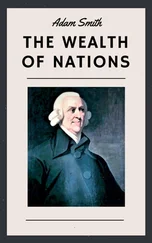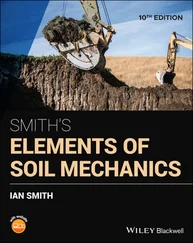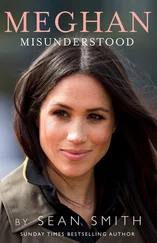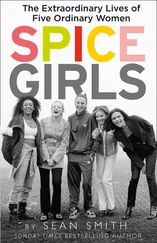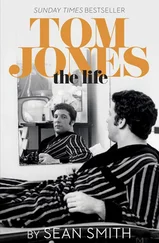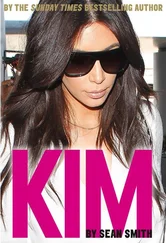For starters it’s a rock album, bearing far more of the influence of Green Day, Guns N’ Roses and Oasis than the acoustic lyricism of Damien Rice. He seems to have taken the power punk of Green Day’s ‘American Idiot’, combined it with the more traditional rock of ‘Sweet Child of Mine’, and thrown in a dash of ‘Don’t Look Back in Anger’.
He had been building up his collection of guitars and wanted to play his best one on the album. He had acquired a striking B. C. Rich rock guitar during his Rusty days. Slash and Axl Rose played B. C. Rich models onstage. You couldn’t miss Ed’s, which was purple with gold hardware. Keith was impressed: ‘It was a really serious guitar with a beautiful bird’s-eye maple neck.’
Spinning Man featured fourteen tracks and fifty minutes of music. The album starts with a drum intro and a dirty guitar riff. This is ‘Typical Average’, one of the first songs Ed wrote. Lyrically, it’s not a high point, repeating, ‘I’m a typically average teen, if you know what I mean’, but it does possess a strangely catchy quality, even if the vocal is distinctly shaky.
The second track, ‘Misery’, contains another powerful rock solo, setting the tone for the guitar work on the complete album. His first rap is ‘On My Mind’, which seems to be directed at an unnamed girlfriend and, while it lacks the power of his later, more sophisticated work, it sounds more like Ed than his Green Day numbers. And it was the first Ed Sheeran composition to contain the phrase ‘fuck off’.
Even more interesting is ‘No More War’, which is a protest song about the futility of war. The older Ed would deliberately avoid writing strong political statements so this is a rare song that proclaims, ‘Put down your guns because it’s not for fun’. ‘Moody Ballad of Ed’ is back in ‘Typical Average’ territory and is probably even shakier vocally as he drifts in and out of tune. He sounds a little better on a slower number, ‘Addicted’, but ‘Butterfly’ and ‘Concord’ are more representative of what is basically a rock album. The last consists of crashing chords and a power solo that would have done Deep Purple or Jeff Beck proud circa 1970. There’s more of that on ‘Crazy’, which has an even longer head-banging guitar solo, and ‘Broken’, which seems to reference ‘Sunshine of Your Love’, a classic Cream track that featured Eric Clapton.
That rock sound continued on ‘Celebrity’ and ‘Sleep’, which must have been a precious commodity in the Sheeran household, with Ed on electric guitar in one room and Matthew on violin in another. ‘Mindless’ was a post-punk homage to Kentucky Fried Chicken before the album ended on a high note with ‘I Love You’, which was probably the closest track to future Ed Sheeran. The problem with his slower songs was that they exposed more obviously his vocal limitations at the time. As every musician knows, recording the album is only the start of the process. He needed a title and decided to call it Spinning Man after a late work by the great surrealist Salvador Dalí. John Sheeran had hung a print on a wall at the house so Ed was very familiar with it and the title seemed perfect for a spinning CD.
To add to the professional feel of the project, Ed enlisted his parents to help produce a proper CD, complete with case and sleeve notes, which proudly declared that all the material was copyright Ed Sheeran and Sheeran Lock Ltd. He asked Alison Newell, a local artist and family friend, to design the cover. She featured his Faith guitar to one side of a black background. Some delicate white spirals, shaped like a prawn, make simple embroidery. The back featured a photograph taken by his father of Ed playing the same guitar on the streets of Galway the previous summer, his first venture into busking. In his thanks, Ed included ‘all those who put money into my guitar case’.
He also thanked his cousins Laura and Jethro, his brother Matthew and all Sheerans and all Locks. There are thanks, too, for Mums and Dabs, his pet names for his mother and father since he was a toddler. Among the friends he acknowledges, he mentions Claire – the inspiration for some of the songs, including ‘I Love You’. According to Ed, they had a very innocent hand-holding friendship that was over by the time he recorded the album, although he was upset when they broke up.
For his musical inspiration, Ed cites Damien Rice, Eric Clapton and ‘Jimmy H’ (presumably Jimi Hendrix) but there is sketchy evidence of their influence on the album. There’s something of Hendrix and Clapton but Spinning Man bears no resemblance to Damien Rice, who really doesn’t do solos, big riffs or long instrumentals on an electric guitar. At thirteen, Ed was still searching for his own sound and his first album was really a hangover from his schoolboy band Rusty. He is, though, too modest about the achievement.
Perhaps the most interesting aspect of Spinning Man is its maturity, best exemplified by his personal message on the sleeve notes: ‘Songwriting and playing the guitar are like having a direct line to my thoughts and feelings. Everyone has strong feelings whatever their age. We can all feel love, joy, longing, pain and hate.’ His mother may have used her editing skills to help but it clearly reveals Ed’s early self-awareness.
He sent the CD to Lisa Hannigan but wished he had waited when he didn’t get a response. The reaction from those he played it to in Framlingham was very encouraging. Nobody wanted him to lose heart by being over-critical of his first recordings, particularly his mother and father. They agreed that if he wanted to make money out of his music, it had to be recorded to a higher standard than he could achieve in his bedroom. He also needed to work on his singing.
When his mum and dad realised how seriously Ed was taking his music, they asked Keith, who had been a television and radio producer, if he could find a local studio to record some of the songs to a more professional standard: ‘John said to me, “Give him some experience in a studio.”’ John was more interested in Ed spending time in a proper studio than in the finished product.
They found the ideal location just a few miles away in the town of Leiston at the renowned Summerhill School, the progressive educational facility founded by A. S. Neill. His grandson Henry Readhead ran the studio there mainly for the school but said that Ed could come with Keith for a session in March 2005.
Keith agreed to waive his fee as producer for the day in return for an hour or two in which John would show him how to improve his business online and make better connections for his own music and performance. John taught him how to build a network of links so that one gig would lead to another. Imogen told him, ‘It’s the currency of the day.’ That system of barter had served Sheeran Lock well and would continue to be useful to Ed as he sought to promote his work.
For The Orange Room , named in honour of his bedroom, they chose Ed’s five favourite tracks from Spinning Room and put them in a different order: ‘Moody Ballad of Ed’ followed by ‘Misery’, ‘Typical Average’, ‘Addicted’, finishing again with ‘I Love You’.
The most striking improvement from Spinning Man was the use of acoustic guitar and, generally, a better vocal, but his attempt at falsetto on ‘Addicted’ needed plenty of work. Occasionally, there are hints of the later Ed Sheeran. Keith remembers doing his best to convince Ed that he needed to tune his guitar all the time because it would show up on an edit even if it was just slightly out of tune: ‘He was a little bit lazy about it.’
Ed had turned fourteen and was beginning to stick up for himself musically. When Keith hinted that a vocal was just a little bit out of tune and they should go back and do it again, Ed was quite clear: ‘I like that. I want to keep that as it is.’ Henry acted as sound engineer and one of his protégées, Megumi Miyoshi, who was sixteen and a promising singer, helped with mixing and some backing vocals.
Читать дальше


